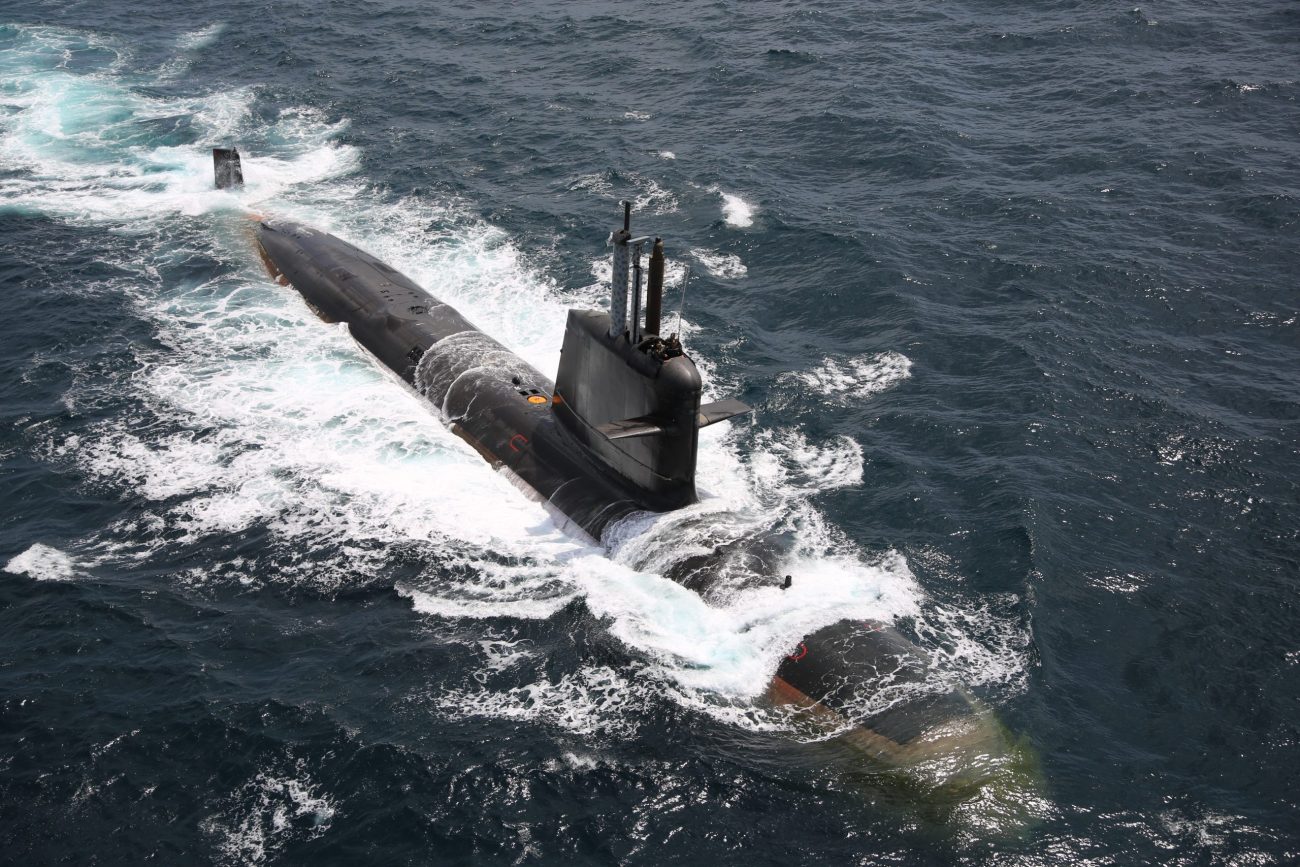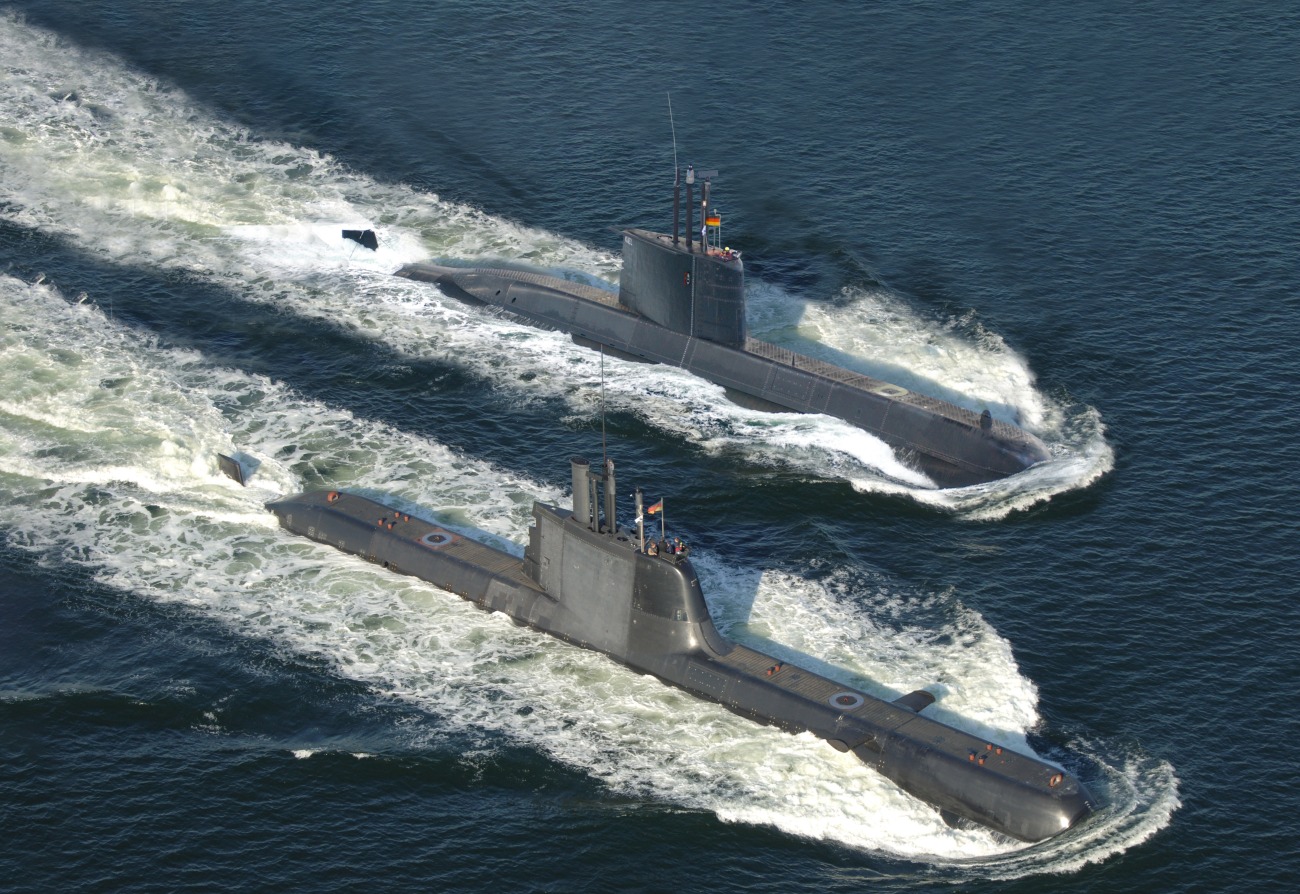The state of the Indian Navy’s submarines is as dismal as that of the Indian Air Force’s fighter squadrons. It has failed to induct a single Air Independent Propulsion (AIP) equipped submarine so far, while the Pakistan Navy is swiftly advancing towards its goal of augmenting its AIP-equipped submarine fleet to 11.
With the indigenously developed AIP system still not operational, the Indian Navy is likely to scrap the project to build three more French-origin Scorpene submarines and throw its weight behind the construction of AIP-equipped diesel-electric stealth submarines, built in collaboration with German firm Thyssenkrupp (TKMS).
Indian media has quoted government sources indicating that the Navy may decide to stop pursuing additional Scorpene submarines and will go full throttle for the construction of the six German-origin diesel-electric stealth submarines at Mazagon Docks Ltd.
The new Scorpene submarines were to be bigger, with nearly double the endurance of the present batch. The cost negotiations for the three more Scorpenes were completed in the last financial year. But it is still awaiting the nod from the Cabinet Committee on Security (CCS).
The CCS is considering the prudence of ordering three more Scorpenes, when the German submarines are “a generation ahead” of them. The CCS will also be assessing if the MDL can manage two complex submarine-building projects at the same time, according to the media report.
AIP-powered conventional diesel-electric submarines (SSKs) are midway between nuclear-powered boats and non-AIP SSKs. It allows an SSK to remain submerged for 10 to 14 days without needing to surface to charge its batteries, which might get it detected.
Other SSKs can stay underwater for roughly 48 hours. The fuel-cell-based AIP is unique, as it generates its hydrogen requirement on board.
An AIP enhances a submarine’s underwater endurance between battery charges by three to four times, thus reducing its vulnerability to detection.
The Indian Navy presently has 17 conventional submarines. Apart from the six Scorpene submarines inducted recently, the rest are over 30 years old and are fast approaching their decommissioning date.
The plans were to retrofit these six Scorpene submarines with indigenously developed AIP technology. As per the “jumboisation” plans, the operational submarine would be cut in half and a new AIP section would be inserted, increasing its length and weight. French shipbuilder Naval Group was to assist in the complex procedure.
After this, the technology will undergo further testing before being fitted into the remaining Scorpene-class submarines. Experts have pointed out that upgrading a weapons platform with new technology will reduce operational readiness, as the repairs will take at least a year.
INS Kalvari, which started its major refit this year, will not be getting its AIP upgrade as the system is still under development by the Defense Research and Development Organisation (DRDO).

The fuel cell-based AIP system, developed by DRDO’s Naval Materials Research Lab with L&T as the prime industry partner, is still not operationally available. The Navy is hopeful that the technology will be ready by the time the second Scorpene (INS Khanderi) comes for her scheduled normal maintenance refit in mid-2026.
The AIP program was sanctioned by the government in 2014 with a budget of INR 270 crore and was scheduled to be completed by June 2017. The project is already eight years behind schedule.
The Indian Navy doesn’t operate a single AIP-equipped submarine yet. Meanwhile, the Pakistan Navy’s all three French Agosta-90B (PNS Khalid, Saad, and Hamza) are powered by AIPs.
This elusive technology means that the capability gap with the Pakistan Navy is increasing fast. The Chinese-built Hangor-class submarines are expected to join the Pakistan Navy by the late 2020s and early 2030s. Upon completion, the submarines will join the Pakistan Navy’s fleet, taking the strength of its AIP-equipped boats to 11.
The Hangor submarines are S-26 variants based on the Chinese Yuan-class submarines, developed for export. Several design changes were made to the standard-grade S-26.
The Hangor-class submarine is larger, with a displacement of 2,800 tons compared to the S-26’s 2,550 tons. But it has a slightly shorter hull (76 m to the S-26’s 77.7 m). Both have the same payload capacity of six torpedo tubes and a Stirling-based AIP system.
These submarines are equipped with advanced sensors and modern armaments, which slightly tilts the tactical power balance in favor of Pakistan. These diesel attack submarines align with the Pakistan Navy’s offensive sea denial strategy, which prioritizes using submarines and missile-carrying maritime patrol aircraft in naval warfare.

German Subs To Boost Indian Navy
In January 2025, India chose German firm Thyssenkrupp to build six submarines in collaboration with Indian shipyard MDL under a Rs. 70,000 crore (approx $8.2B) project named Project 75I.
The submarines will be built in India from the first boat onwards. TkMS will supply the design and critical elements, and MDL will execute the project. The first submarine will be built around seven years from the date of the contract; thereafter, one submarine can be expected every year.
As earlier reported by the EurAsian Times after an exclusive visit to TKMS shipbuilding facility in Kiel, the submarine offered to the Indian Navy is a customised 214-class submarine.
It will have the latest enhancements in AIP technology. It will have the unique combination of a fuel-cell-based AIP system and a Lithium-Ion battery. The Fuel-cell AIP provides the submarine with long-range endurance at low speed, while the Lithium-ion battery enables it to cruise at high speed to reach its desired destination.
The combination technology will help the Indian Navy extend its range to cover the entire Bay of Bengal while remaining submerged. The hydrogen-powered fuel cell-based AIP technology in the new 212 and 214 class submarines gives them the capability to remain submerged for three weeks at a time.
The 212 or 214 class of submarine can operate silently without emitting exhaust heat, increasing its stealth. Fuel cells offer the lowest noise levels because almost no sound is produced by an electrochemical reaction. It can launch torpedoes stealthily with a water ram expulsion system.
AIP-enabled submarines have increased mobility. They can “bottom” or sit on the ocean floor, running only critical systems to preserve energy and extend operational time, while using passive sonar to detect targets.
Since fuel cells operate with greater efficiency at lower loads, bottoming could extend the endurance of a particular mission. The efficient energy systems onboard have been one of the key requirements of the Indian Navy.
- By: ET Online Desk
- For any feedback, mail us at: editor (at) eurasiantimes.com




